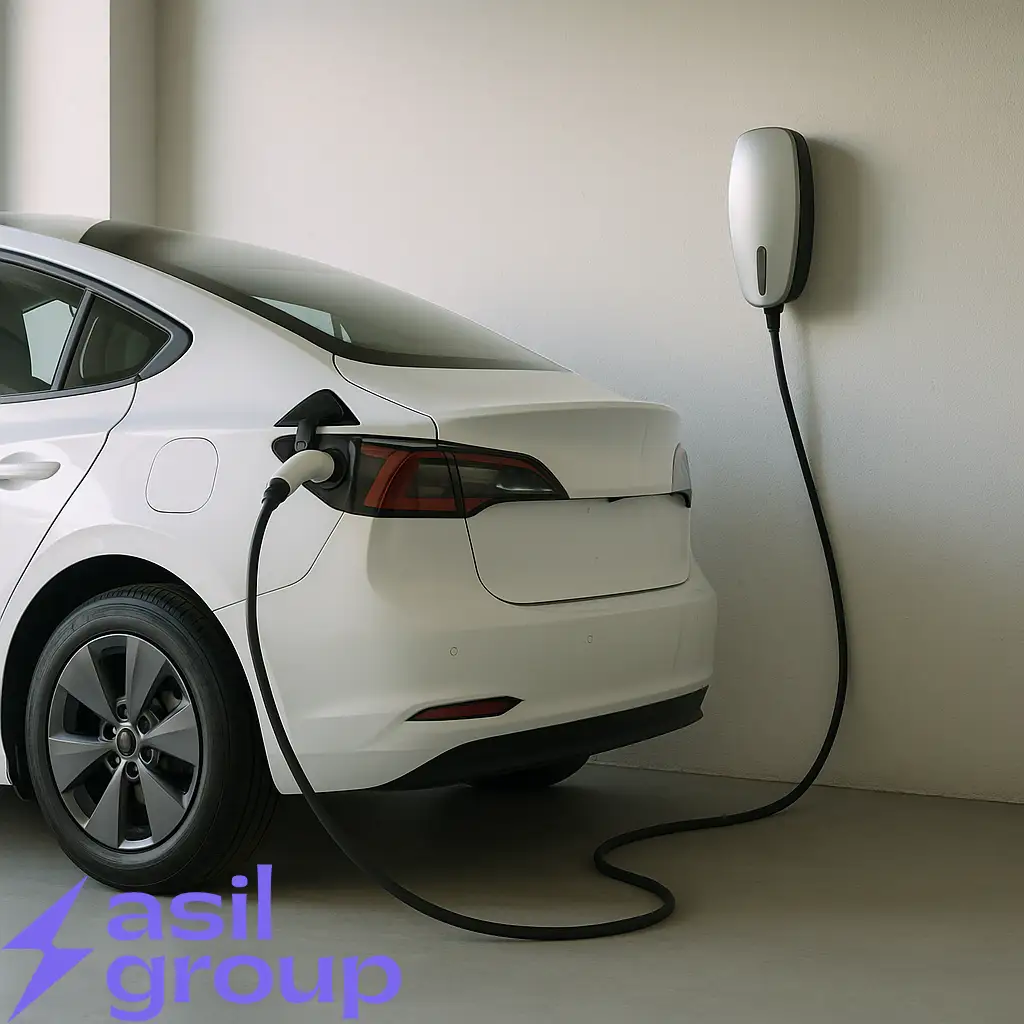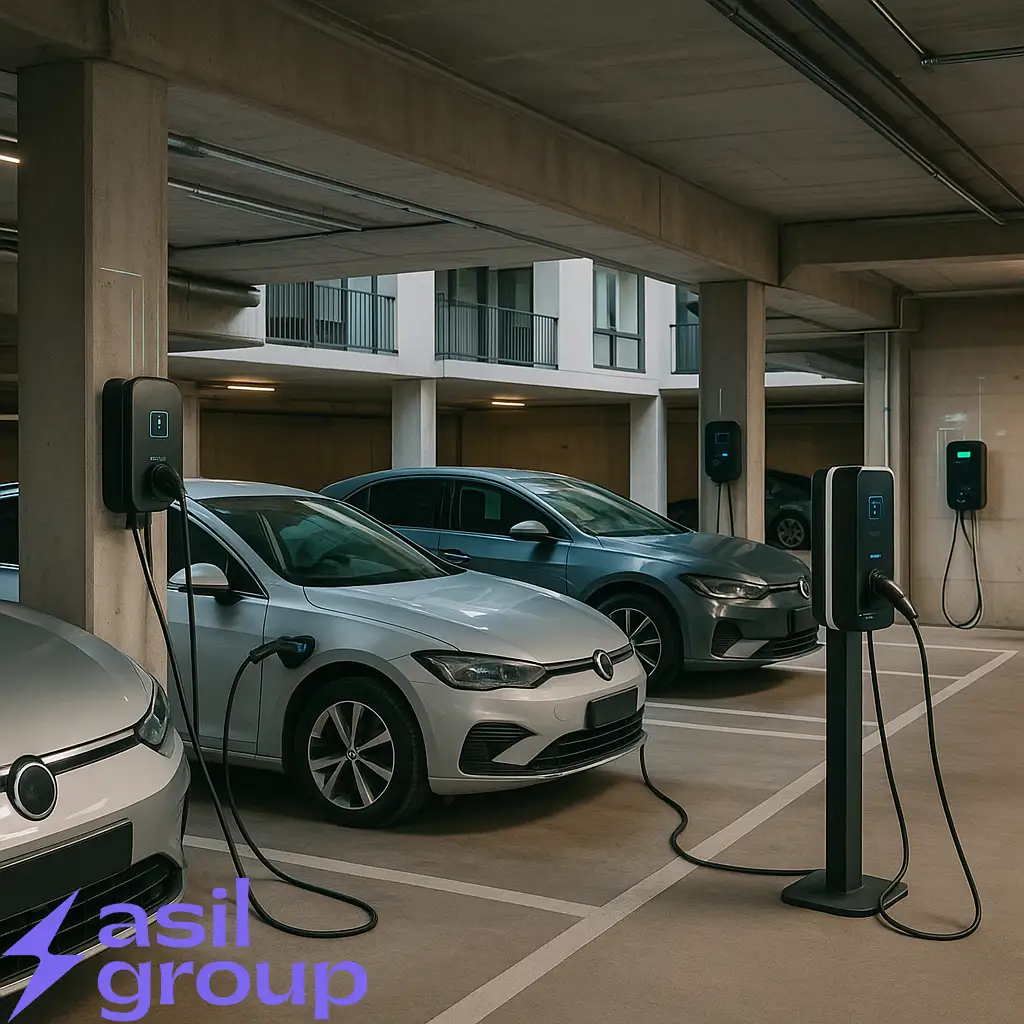
Smart Load Management in EV Charging Networks
Back to all posts As electric vehicle (EV) adoption accelerates globally,

As electric vehicles (EVs) become increasingly popular, understanding the charging infrastructure is essential. Asil Group offers two primary types of chargers for EVs: AC chargers and DC chargers. This article explores the differences between AC and DC chargers, their functionality, advantages, and best use cases.
Electric vehicles are transforming the automotive industry, offering a sustainable alternative to traditional internal combustion engine vehicles. A critical component of the EV ecosystem is the charging infrastructure, which ensures these vehicles remain powered and ready for use. AC and DC chargers from Asil Group play pivotal roles in this ecosystem, each with distinct characteristics and applications.
AC chargers provide electricity in the form of alternating current, the standard form of electricity supplied by the power grid. When an EV connects to an AC charger, the onboard charger within the vehicle converts the AC power to direct current (DC) to charge the battery.
Key Features of AC Chargers:
DC chargers supply direct current directly to the vehicle’s battery, bypassing the need for conversion by the onboard charger. This allows for significantly higher power levels and faster charging times.
Key Features of DC Chargers:
| Feature | AC Chargers | DC Chargers |
|---|---|---|
| Power Output | 3.7 kW to 22 kW | 50 kW to 350 kW or more |
| Charging Speed | Slower, ideal for overnight charging | Much faster, suitable for quick top-ups |
| Installation Cost | Lower | Higher |
| Maintenance Cost | Lower | Higher |
| Connector Types | Type 1 (SAE J1772) or Type 2 (Mennekes) | CCS, CHAdeMO, or Tesla Supercharger |
| Ideal Use Case | Home, workplaces, public places | Highway rest stops, urban fast-charging hubs, commercial fleets |
| Complexity of Infrastructure | Simpler | More complex |
Both AC and DC chargers are integral to the EV charging infrastructure, each serving distinct purposes. AC chargers from Asil Group, with their cost-effectiveness and suitability for overnight charging, are ideal for residential and workplace environments. DC chargers, offering rapid charging capabilities, are crucial for long-distance travel and high-demand urban areas. Understanding the differences between these chargers helps EV owners make informed decisions about their charging needs and supports the broader adoption of electric vehicles.
As the EV market continues to grow, advancements in charging technology from Asil Group will further enhance the convenience and accessibility of both AC and DC charging options, driving the shift towards a more sustainable future.

Back to all posts As electric vehicle (EV) adoption accelerates globally,

Back to all posts As electric vehicles (EVs) become more popular,

Back to all posts As electric vehicles (EVs) become more common,

Back to all posts As electric vehicle (EV) adoption accelerates globally,

Back to all posts As electric vehicles (EVs) become more popular,
Asil Group offers cost-effective and eco-friendly EV transportation solutions. We focus on convenience with AC chargers, DC fast chargers, and Wallbox chargers, serving premium locations and enhancing quality of life with smart, sustainable EV charging.
Asil Group offers cost-effective and eco-friendly EV transportation solutions. We focus on convenience with AC chargers, DC fast chargers, and Wallbox chargers, serving premium locations and enhancing quality of life with smart, sustainable EV charging.
Asil Group offers cost-effective and eco-friendly EV transportation solutions. We focus on convenience with AC chargers, DC fast chargers, and Wallbox chargers, serving premium locations and enhancing quality of life with smart, sustainable EV charging.
Phone: +98 21 22221422
Email: [email protected]